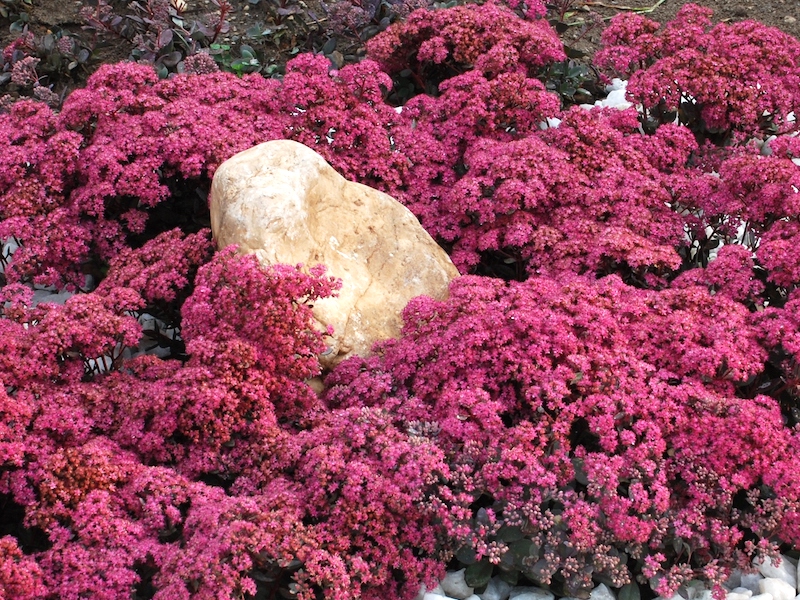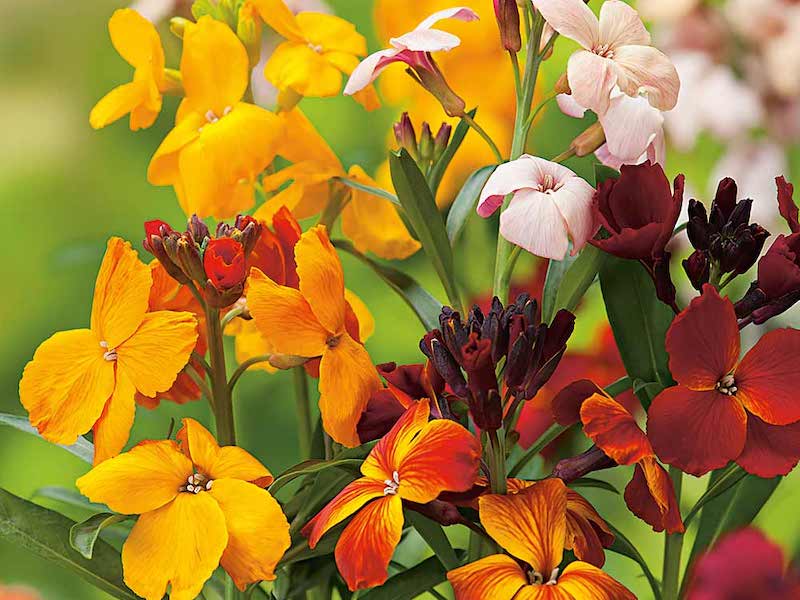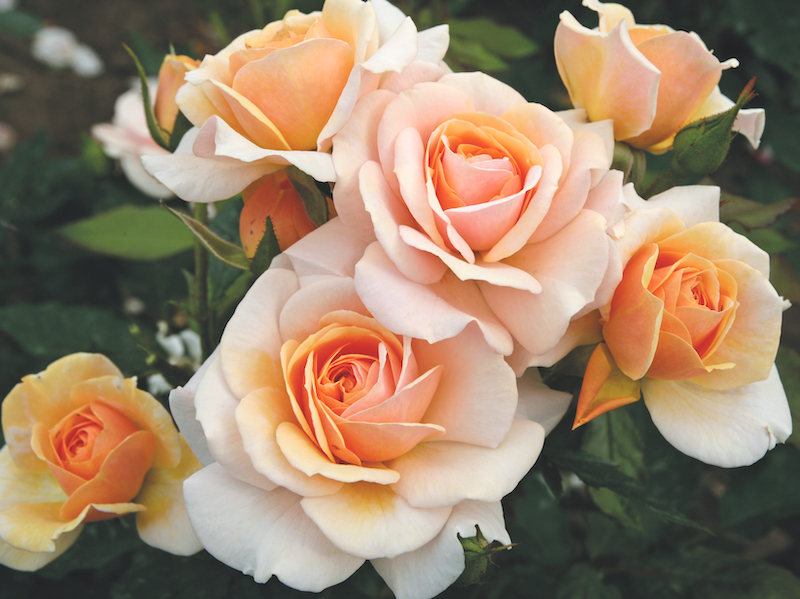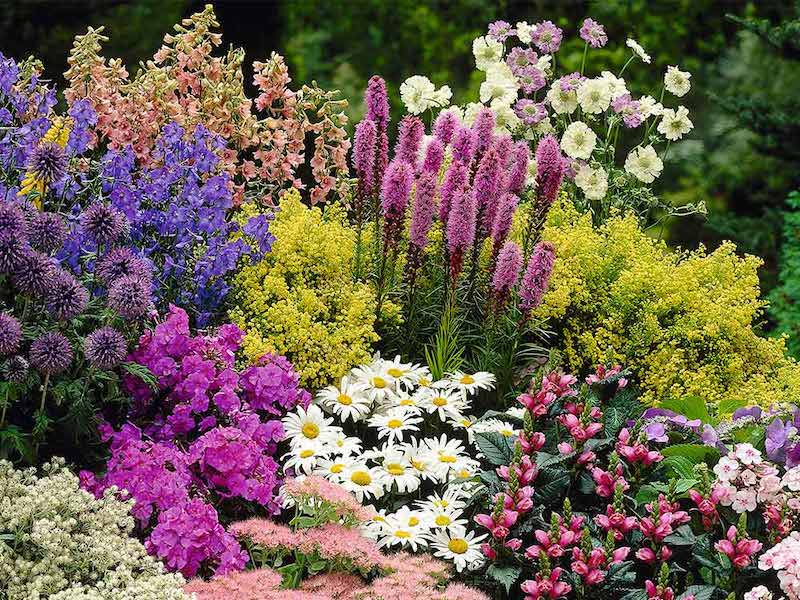The traditional English cottage garden offers a riot of colour and informality which has long inspired poets, including John Clare, William Wordsworth and Flora Thompson. If you’d like to create your own rural idyll, success depends on managing your planting so that it looks wild and unplanned but is, in fact, the result of very careful thought, preparation and execution.
Here are some top tips to help you choose the best cottage garden plants and create your own charming, multi-layered and abundantly planted scheme.
What is a traditional English country garden?
The archetypal English country garden evolved from medieval times when peasants would graze cattle on common land and use the ground around their homes to grow fruit, vegetables and herbs to eat and for use as medicine.
The fruit would have included apples and pears for making cider, along with gooseberries and raspberries. Many cottagers would also find room for a few chickens, a beehive, and maybe even a pig sty. Keeping livestock required fencing and, over time, these fenced areas became known as gardens. The livestock also provided manure with which the peasants could fertilise their plants.
Come Elizabethan times, rural England had become more prosperous and flowers started to be grown as fillers between the herbs and fruit. Even these flowers often had a use, for example, lavender and violets were picked and strewn on the floors of the cottages in an attempt to sweeten the smell.
Gardens continued to develop and, with the coming of the Arts and Crafts Movement of the 1880s, even large houses were opting for an informal cottage garden style effect. Hidcote Manor is just one example of the many wonderful gardens from this period and is well worth a visit.
What is a modern cottage garden?

Image: Sedum plant ‘Sunsparkler Dazzle Berry’ from Suttons
The quaint stone cottage at the end of the path bedecked with roses, carnations, and larkspur is still considered the epitome of the traditional, romantic and perhaps somewhat idealised, ‘chocolate box’ cottage garden. In reality though, there’s quite a lot of wiggle room in what can be considered to fall under the category of cottage garden.
Today, the term refers to a relatively wide range of garden designs which include flowers, fruit trees, herbs and vegetables growing alongside each other in an informal, almost casual way. These gardens rarely include much lawn and should be densely planted with lots of different colours, shapes, and heights that just about work together, but without looking contrived.
Tips for creating a cottage garden

Image: Floramedia
The wide range of plants included in a cottage garden means that it takes a bit of thought and planning to create or maintain, and it does require a certain level of plant knowledge. The good news is that the dense planting helps to suppress weeds and the fact that the plants are jumbled makes it less easy for pests and diseases to take hold.
Do bear in mind that the various plants you choose will have different needs in terms of feeding, pruning, etc. and that, by the nature of the type of plants included, there won’t necessarily be a huge amount of winter interest. Here are a few tips to help get your garden started:
- Use natural products and structures like wooden fences and gates, hurdles, local bricks or stones for paths and rustic willow or wooden arches and arbours.
- The joy of a cottage garden is its informality with the plants all jumbled together. Think higgledy-piggledy.
- Abundance is a keyword to bear in mind when creating your cottage garden. No empty spaces are allowed. Create new plants by dividing large clumps of perennials. Annual bedding plants are great fillers – both cheap and cheerful.
- Variety is important in terms of the types of plants, the heights and the colours.
- Keep it simple and naturalistic.
- Try to make any paths curve as opposed to being straight lines and soften the edging with plants such as Alchemilla mollis and lavender.
- Scatter wildflower seeds on the approach to your garden and wherever there’s space.
- Encourage wildlife by hanging bird feeders and perhaps including a small natural pond or other water feature.
- Add outdoor furniture and enjoy the beauty that you have created. A rustic wooden seat or perhaps a colourful deckchair would be ideal.
Best plants for a cottage garden

Image: Rose (bush) Floribunda ‘Sweet Honey’ from Suttons
One of the many good things about a cottage garden is that there are no rights and wrongs – grow whatever plants you like. Just remember that you need an abundant jumble of them. Some suggestions:
- Alchemilla mollis
- Aquilegia
- Annual bedding plants
- Aster
- Cosmos
- Foxgloves
- Lavender
- Lupins
- Peonies
- Primroses
- Roses
- Sunflowers
In amongst these flowers, grow cabbages, salad leaves, courgettes, tomatoes, wigwams of beans and any other vegetable that you will later enjoy eating. And don’t forget to include fruit trees, soft fruit and of course plenty of herbs.
At its riotous best, a cottage garden is a wonderfully colourful, scented outside space that’s as much a haven for wildlife as it is for you. Surprisingly easy to achieve, with these tips your new cottage garden will be ode-worthy in no time. Worried about a dark corner where nothing seems to grow? Take a look at our shade loving plants.
Lead image: Cottage Garden Perennial Plants – Our Selection/Copyright: Visions BV, Netherlands



